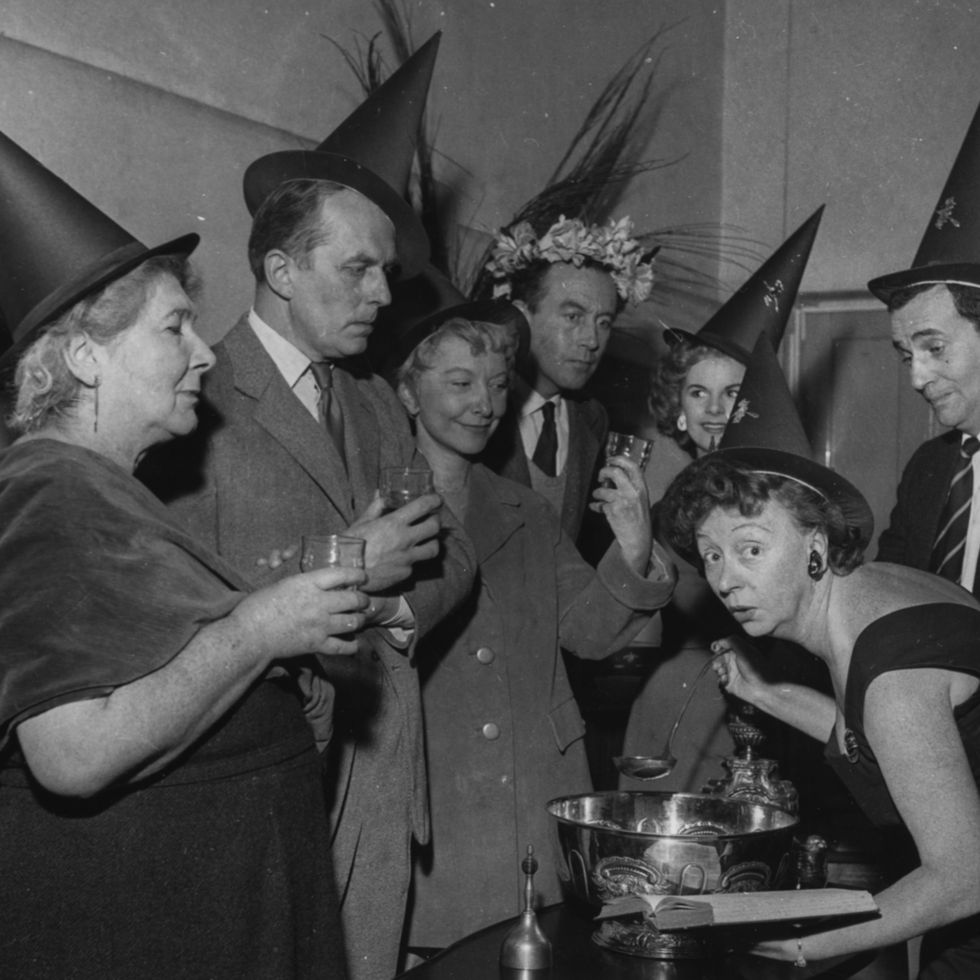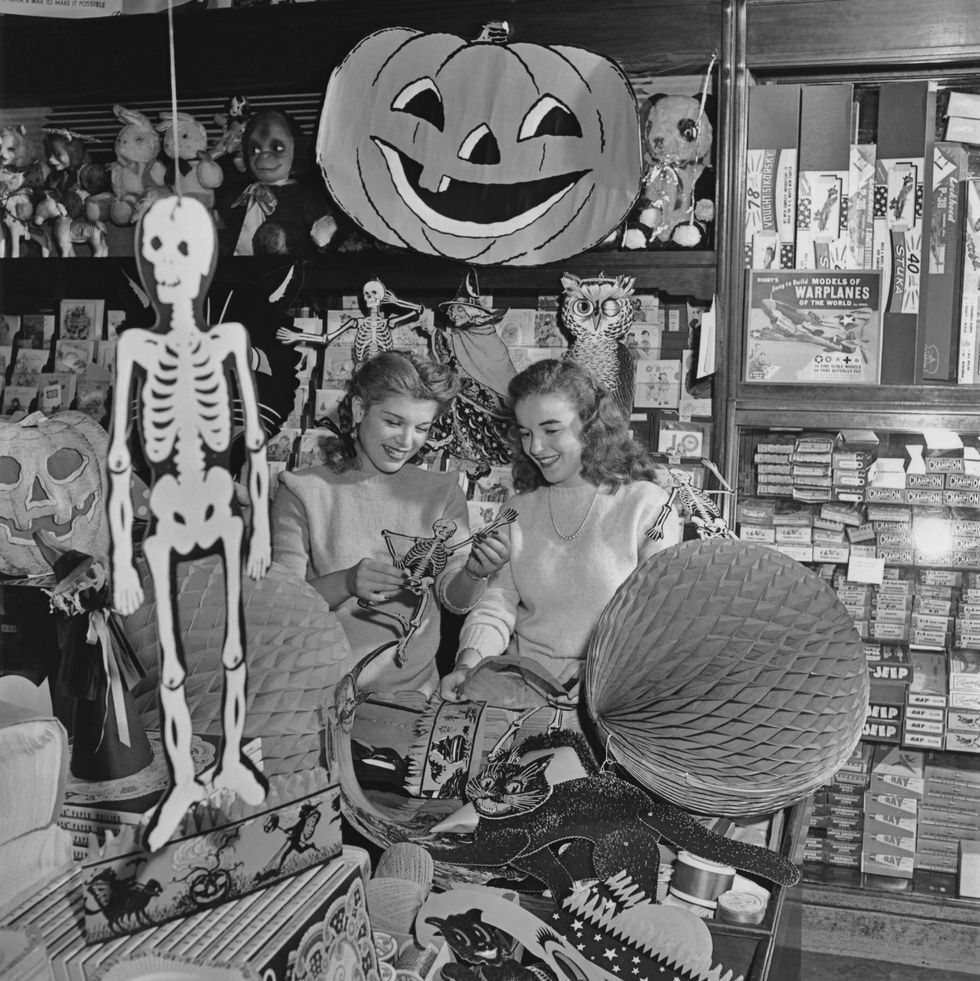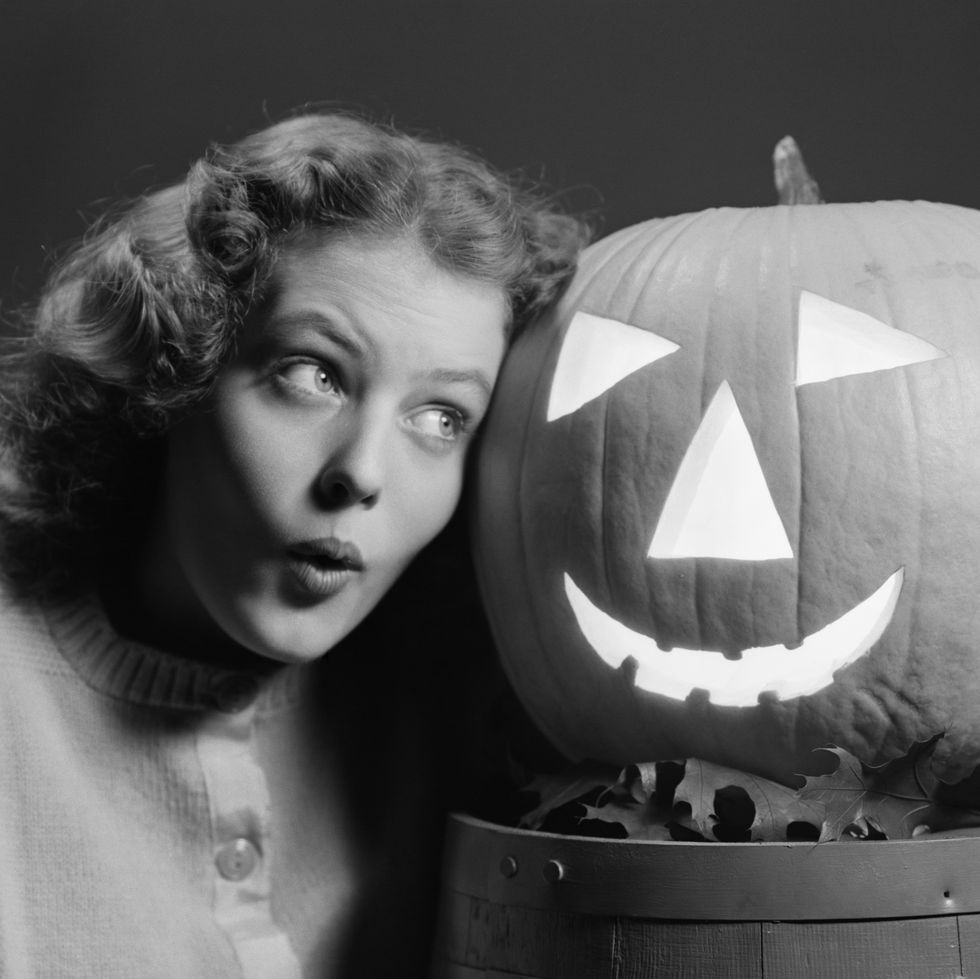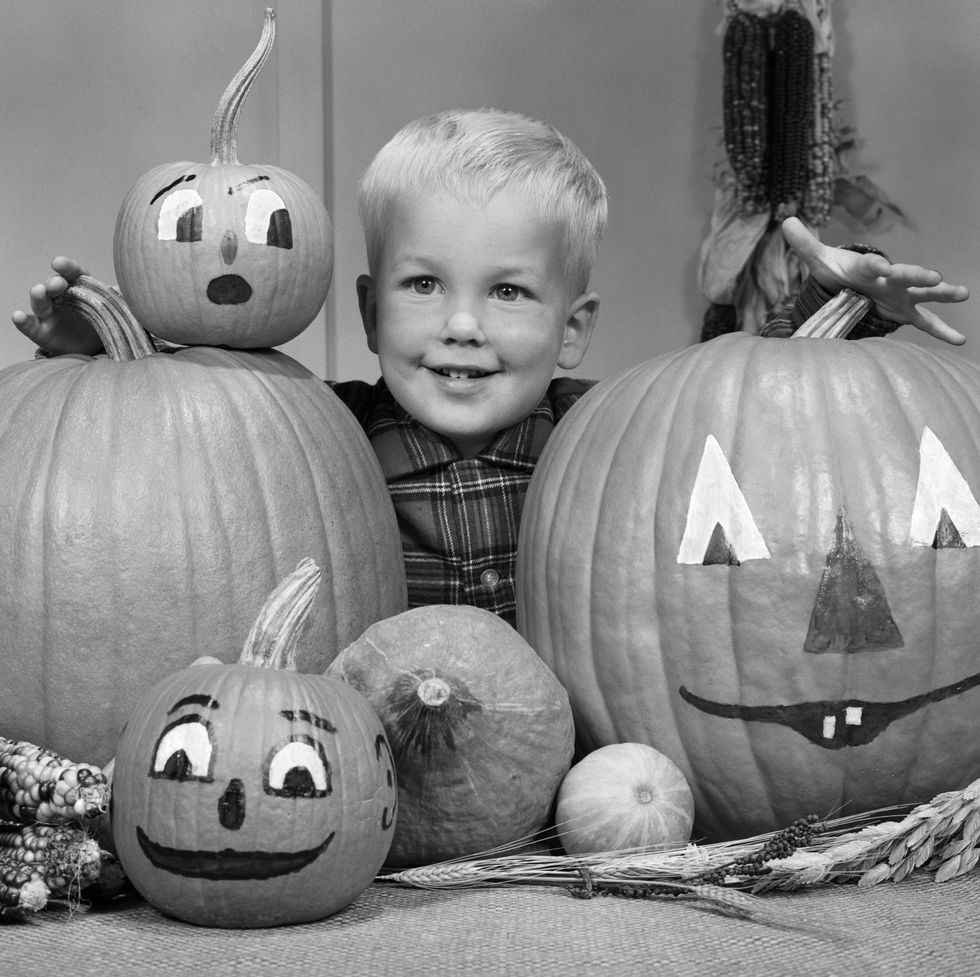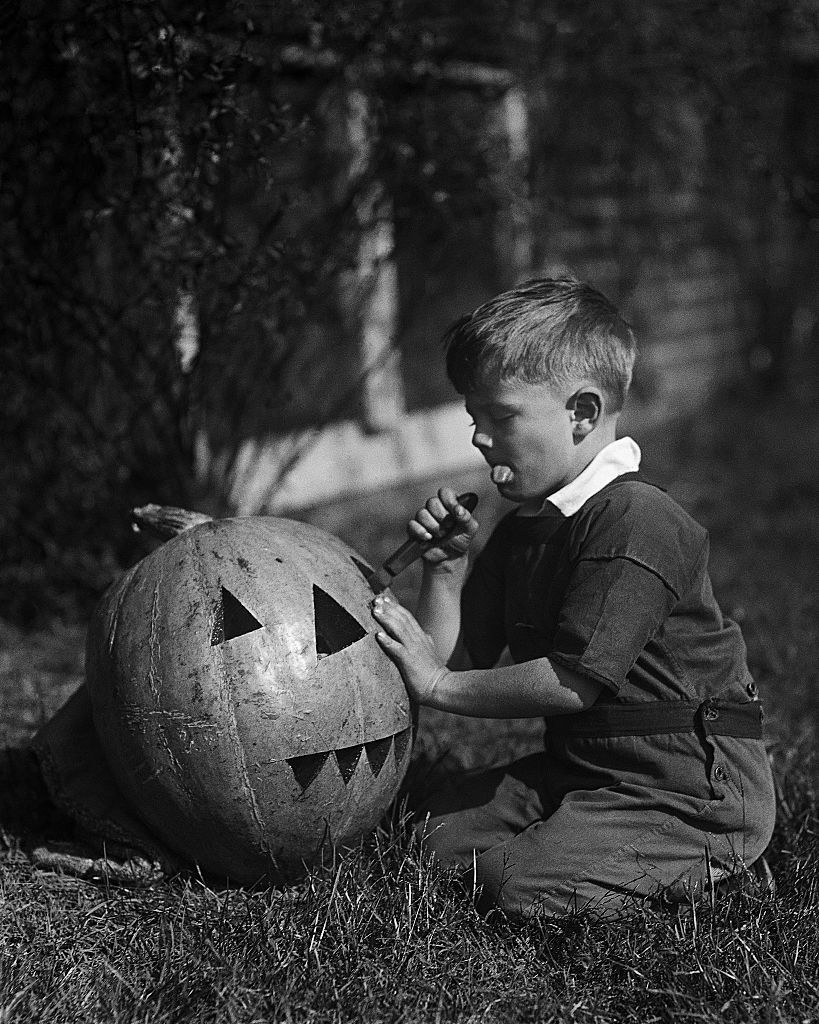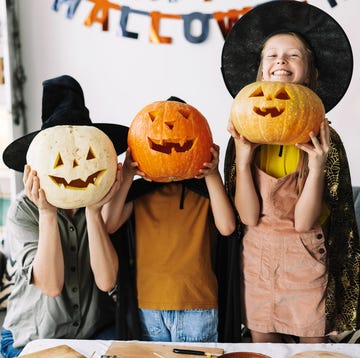Picture this: a roaring bonfire, spooky snacks, and endless ghost stories being told. Sounds like the perfect All Hallow's Eve, right? But just where exactly did all that Halloween candy and ghostly lore come from? And who decided that carving pumpkins, bobbing for apples, and dressing up on October 31 were staple traditions of spooky season? If you're wondering about all of that and then some, you'll want to keep reading to find out the true history of Halloween and all of its terrifying traditions!
Speaking of terrifying, you'll also find out about all the scary superstitions associated with the holiday, like why black cats are considered bad luck, as well as how the colors black and orange became quintessential to the holiday ahead. And it all traces back to the origins of Halloween! In short, this ancient holiday goes way back to the Celts of Europe. The costumes, bonfires, ghosts, and eerie tales all play a significant role in that rich history. Interestingly, trick-or-treating and neighborhood gatherings are relatively modern additions! But more on these Halloween facts below, starting with where it all began...
What is the real story behind Halloween?
The origins of Halloween date all the way back to the Celts of ancient Ireland, who celebrated the new year on November 1. That day marked the transition from the warm, fruitful summer months to the cold and dark winter, a period that was most often associated with death. So, on October 31, the night before the new year, they celebrated what was known as (cue the spooky voice) Samhain. It was a night when the boundary between the living world and the world of the dead became thin, and ghosts could return to walk the earth. Or so they believed.
These meddlesome ghosts damaged crops and caused trouble, but the blurred line to the spirit world also made it easier for Celtic priests to make predictions about the coming year.
How did Halloween traditions start and why?
Those same prophecy-speaking priests commemorated the night by building huge bonfires that became the hub for evening activities. People gathered around in costume to disguise themselves from ghosts, tried to tell each other's fortunes, enjoyed a big feast, and made lanterns out of gourds (sound familiar?). Here's another bit of info: those big bonfires attracted insects, which then attracted bats. That's why the flying critters are now associated with the holiday.
These pagan traditions continued until Christianity extended its influence into the Celtic lands, and the celebration became generally toned down. The name "Halloween" came from the Christian All Souls' Day celebration, also known as "All-hallows." And since All-hallows was on November 1, folks began to call Samhain "All Hallows Eve." That name was eventually shortened to Halloween.
Now, what about some of the other Halloween traditions you know and love? When it comes to bobbing for apples, you can possibly attribute their introduction to early Roman conquests and the Romans' own fall holiday which was symbolized by an apple. As for black cats, the idea of being spooked by the felines actually has roots in the Middle Ages. Back then, many believed that witches avoided detection by turning themselves into black cats. Then there's the traditional Halloween colors of black and orange. This theme once again dates back to the Celtic festival of Samhain. For the Celts, black symbolized the “death” of summer while orange represented the harvest season.
How did Halloween become an American holiday?
The Halloween that you know today is a result of the great American immigrant melting pot. At first, celebrations were pretty limited in colonial New England as the Puritans weren't on board with the holiday's pagan roots. Because of this, Halloween was more common in Maryland and the southern colonies. But as different European ethnic groups began to mix, a distinctly American version began with public events to celebrate the harvest. Neighbors would gather at these "play parties" to share stories of the dead—also known as ghost stories—and enjoy some mischief-making. Still, it was not until a large wave of Irish and Scottish immigrants came over during the 19th century that the holiday became widely celebrated across the country. Historians estimate that by the early 20th century, Halloween was celebrated across North America by most everyone.
What's the history of Halloween costumes and trick-or-treating?
Wondering how trick-or-treating came about? Well, there's actually several theories about that. One idea is that the custom came from Ireland where young people once took part in a tradition called guising where they would dress in costume then sing, tell a joke or perform another sort of “trick” before collecting a treat of fruit, nuts or coins. There's also the act of souling, which traces back to 15th century Christians who would go door-to-door asking for treats or "soul cakes." They would take these pastries in exchange for a promise to pray for the souls of those homeowners’ dead relatives. Later, American children took a note out of the European book and began going door-to-door asking for treats.
Speaking of treats, you might be wondering where candy corn came from. Today, the tri-colored candy is a symbol of Halloween, but it hasn't always been that way. The birth of candy corn can be traced back to the 1880s Philadelphia, where a candymaker at the Wunderle Candy Company was said to have invented it. This was only the beginning, though. In 1898, the Goelitz Company began to produce candy corn on a wider scale, dubbing it "Chicken Feed," leading to an increase in popularity. This all peaked in the 1950s when candy corn's identity as a Halloween staple became solidified in the U.S.
As the more serious, life-or-death parts of the Celtic traditions began to fade, new lighthearted variations emerged: Fortune-telling, for example, turned into bobbing for apples in which women could find out which suitor (the apple) she would eventually "bite into" (as in, marry 😂). Young Irish and Scottish kids helped bring about the tradition of costumes: The pranksters went from dressing up as priests to putting together scary creatures intended to spook the neighborhood.
As for carving pumpkins, the Irish had a custom of carving scary faces into turnips or potatoes and placing them near doorways and windows to frighten away wandering spirits. One of those spirits is known as “Stingy Jack,” a man who outsmarts the Devil and avoids Hell. Because of this, his soul cannot go to Heaven and he instead wanders the Earth. In trying to avoid Jack and his sinful dealings, the Irish idea of Jack-o'-lanterns came to be. In time, the Irish brought this tradition with them to America and found that pumpkins, a fruit native to America, make for even better Jack-o’-lanterns.
Eventually, the games, mischief-making, and hunt for sweets all melded together into trick-or-treating, and the whole thing became more about community than anything else. By the time the 20th century rolled around, it was an essentially secular holiday centered on neighborhood get-togethers and parties.
Today Americans still love Halloween and put modern twists on their celebrations. You can find the most haunted states and visit their haunted houses or a corn maze, or even order your state's most popular candy to leave at your door.

Micaela Bahn is a freelance editorial assistant and recent graduate from Carleton College, where she majored in English literature. She loves running, photography, and cooking the best new recipes.


